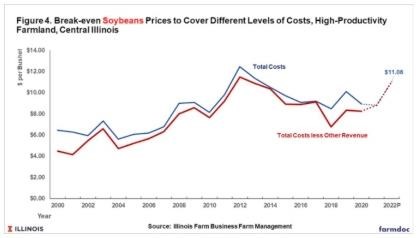By Antonio Mallarino
The 2021 cropping season had variable rainfall across Iowa. Since crop harvest began, rainfall also has been variable, and temperatures have generally been above normal. Therefore, it is not surprising to hear of variable but often higher than normal end-of-season cornstalk nitrate test levels and postharvest soil nitrate levels. Farmers and crop consultants should use caution in interpreting these results for N fertilization of next year corn.
End-of-season cornstalk nitrate test
You can read details about this test in Iowa State University (ISU) extension publication CROP 3154 “Use of the End-of-Season Corn Stalk Nitrate Test in Iowa Corn Production”. This test is especially good to diagnose excess nitrogen (N) availability or application, such as with excessive manure or fertilizer N application or when conditions limit yield. When N supply during the season was optimal or deficient for corn, plants with optimal or inadequate N supply remove nitrate N from the lower stalks and leaves during the grain-filling period, and thus have low nitrate levels in the lower stalk portions. Corn plants that had more N available than needed to attain maximum yield accumulate nitrate in the lower stalk at the end of the season.
Stalk test nitrate-N values at 2000 ppm or higher indicate much unused N by corn and high potential nitrate recycling from the stalks to the soil. Both ammonium and nitrate resulting from corn and soybean protein degradation after physiological maturity and from postharvest residue also are recycled to the soil.
Soil profile nitrate in the fall
In addition to N recycling from plants, other processes could cause higher than normal postharvest soil nitrate levels in the fall. In drought-affected cornfields, there could be significant N carryover from earlier manure or N fertilizer applications. The transformation of soil, microbial, or crop organic N into ammonium and then nitrate is called N mineralization. These are the major N forms plants can absorb. Nitrate is not retained by the soil and can be easily leached by rainfall to the subsoil and from there to groundwater or surface waters by tile drainage.
All the mentioned processes are affected by rainfall, temperature, and soil aeration among other soil properties. Therefore, amounts of soil nitrate in the fall vary widely across and within fields and at different profile depths. There is little nitrate in the soil profile in the fall with normal or excessive rainfall during the growing season and after harvest, good yields, and/or cooler than normal late summer or fall soil temperatures. In the absence of these conditions, significant soil nitrate amounts may be present in the soil profile. Air and soil temperatures since late September until this article is being written have been higher than normal across the state and rainfall has been very variable. The Iowa Environmental Mesonet provides frequently updated information about rainfall and soil temperature across the state. Also, the Crop Physiology group of the Department of Agronomy at ISU provides frequently updated soil moisture and estimates of soil N mineralization in the Forecast and Assessment of Cropping systems (FACTS) website (see this information on the Soil Conditions) tab of the website.
Consideration of fall nitrate levels
It is very risky to consider fall soil N mineralization rates and nitrate concentrations in the soil profile when deciding N fertilization rates for corn the following year. This is because higher variable rainfall and temperatures from late winter until after corn planting (and sometimes later) strongly influence soil nitrate levels and future N mineralization rates. For this reason, fall soil profile nitrate levels in Iowa and other states of the humid Corn Belt are not recommended to help decide N fertilization rates for the next year’s corn crop.
This was demonstrated by work of Dr. John Sawyer and several ISU Extension Field Agronomists from fall 2012, a drought year, to spring 2013. Table 1 shows a portion of data provided in previous ICM News articles that allow for direct comparison of fall 2012 and spring 2013 soil nitrate-N levels measured in the top two or three feet of many fields.

Especially with the high current fertilizer prices, farmers who apply N this fall are advised to apply their normal N rate or, better, use the Maximum Return to N (MRTN) guidelines. The Corn N Rate Calculator, which was last updated in 2019, provides N rates based on past years’ yield response data for optional grain and N prices. Details about using the MRTN concept and the N rate calculator for Iowa is provided, together with other N management considerations, in the extension publication CROP 3073 Nitrogen Use in Iowa Corn Production and in a 2020 presentation by Dr. John Sawyer Nitrogen Management for Corn Production. The calculator output provides flexibility for choosing a rate because it calculates a range of rates encompassing the MRTN by one dollar more or less. This range of rates varies greatly according to grain and N prices used but often ranges from 10 to 20 lb N/acre plus or minus the MRTN rate.
In summary:
Early results from the end-of-season cornstalk nitrate test and of analysis of soil nitrate are variable across the state this fall, and frequently may be higher than normal. Their consideration to modify normal farmer N rates or MRTN rates for corn in 2022 is very risky and not recommended. Farmers may consider applying additional N next season if spring conditions warrant it.
Source : iastate.edu